A Primer for Mixed Breed Dogz Posing
Posted: Tue Mar 05, 2024 1:55 am
SHOWING MIXED BREED DOGZ
The RKC dogz posing guide is an amazing resource for posing dogz, and I recommend it as the place to start with learning to pose caninez. However, it can still be challenging to know if you’ve secured the best possible pose for your pup if it has a mixture of different breed features. I’ve penned down a few tidbits as an addition to the information provided on RKC. I hope you will find it useful when you’re posing some of the more uniquely shaped individuals in your crew (or if you are judging a pet and want to be sure you are placing it fairly).
ALIGNMENT:
Whatever the mix is – shoot for even back toes or the far paw being one pixel back. These two alignments tend to do well with most judges and are generally considered to be correct. Whatever conglomeration of ballz you are working with – alignment is the place to start.
Mixed breeds can be quirky, but they should be able to achieve even toes, 1 pixel back, or both. If you are struggling to get either of these alignments go for 2 pixels back. For most judges, a pet isn’t considered aligned if the far paw is in front of the close one by any number of pixels.
Lab legs are an exception to note here. They can be acceptably aligned at even toes or up to 3 px back on the far paw. Check Gene Poolz to see if you are working with lab legs. Bear in mind that lab alignment is about the legs – not the face, not the body, feet, etc. So just because you have a lab mix on hand, doesn’t mean you should be shooting for “lab alignment.” If in doubt, keep it simple and shoot for the aforementioned even toes or 1 pixel back. Lab legs are accepted in these alignments as well.
The other features of your pet (such as its scales) will influence its appearance in an aligned pose. If your mixie can pose with even toes as well as 1 pixel back, try to get poses in both alignments to see which is more flattering.
DALI POSE
If you are struggling to isolate the correct dali pose frame for your aligned pet, try the following:
~ Check the nose for the heart shape.
~ Check the breath point. (Is the chest full, are the legs straight, is the tail curled?)
~ Measure how close to even the eyes are (using the RKC guide for the breed head as a general reference).
~ Cross reference the pet’s individual body parts with the purebred examples at RKC.
If you are autosaving the pose sequence, you will ideally have the frames before and after the one you are considering, so you can thumb through and watch the tail curling, the legs straightening, and the rate of head turn as the pose progresses. If you don’t typically autosave the entire sequence, I do recommend electing to use this method for securing a dali pose on unusual mixes. It can be challenging to spot the correct frame without the neighboring frames for reference, especially for mixies with a more limited or angled head rotation, like bullies and scotties.
Dali poses can also be tricky on mixed breeds because the current trend is for your pet to have a “heart nose.” Unfortunately, some mixed breeds cannot achieve a heart nose at all, or if they can it is a bit wobbly. It also tends to look less flattering because it is typically not the frame that is at the pet's highest breath point. You may have to decide if you want to buck the trend and use the pose with the more flattering breath point, or the frame with the trendy heart nose (or the closest thing to a heart nose that your pet can achieve).
It is important to note that sometimes posing the pet at different alignments can provide different nose results. As the pet’s handler, you may have to decide if the pose with the wobbly heart nose is better than a flat nose, or if the heart nose pose is better than the one that is more traditionally aligned. If your pet cannot achieve a heart nose at all in any proper alignment, your best bet is usually to use the frame that is correct in every other general way (essentially the frame that would have a heart nose if the pet was able to do it, even though this is typically the frame before the highest breath point. I often use the highest breath point frame in these scenarios since I prefer it, but I admit that it typically does not place well.)
DANE POSES
Dane poses can be a must for mixies with dali poses that look a bit sloppy, even at their best. When the pet is aligned, you want the highest breath point and the head looking as straight forward as possible. High heads are often favored, but low heads can be regal as well. How high your pet’s head can tilt seems to be dictated by the breed head.
Sometimes a dane pose doesn’t look quite as tall and compact with certain body part combinations – especially scottie heads on non scottie bodies. Analyzing the curve of the pet’s tail can help in these situations, especially if you are on the judging end of the equation.
GENERAL INFO
~ Sometimes a pet can appear to be skinny posing if the combination of scales and body parts creates a deception. Dane bodies are notorious for this. If you suspect your pet gave you a skinny pose, save it, and get another pose sequence or two to compare. I put the pet away after the questionable pose set, then take it back out again, just to be extra sure that I’m starting with a fresh slate.
~ Scales can interfere with nose shapes, eyes, alignment ability – you name it. Whatever limitations your pet has, go for the best alignment it can get first. That is your top priority. After that, look at the breath point. From there, you may have to choose what you believe is the most flattering representation of your pet. In my opinion, this is what makes showing mixes a fun experience. You have choices to make, not a cookie cutter pixel arrangement to recreate from a sample.
~ Although the mixing of breed features can influence how they appear in pose, comparing each body part to the purebred sample can be very helpful. For example, a sheepie tail at the proper frame on a mixie is likely to look very similar to a sheepie tail on a purebred sheepdog. The key to using the piece by piece analysis is knowing your pet’s body parts. As the pet’s handler, you should familiarize yourself with the composition of your pet so that you have a better idea of what to expect from their poses. If you can’t ID dog parts at a glance, or if scales are making things a little unusual, Gene Poolz can usually clear up the question. If that doesn’t do it, share the pet’s photos with your helpful petz community friends to reach a consensus.
~ If you are judging a quirky mix, bear in mind that it may not be able to display a heart nose, or that its alignment may be impacted by its scales. Refer to the tips above to determine as well as possible if the pet in question is at its best. Sometimes, especially in dali pose, the pet’s head may look like it is at the incorrect frame, or as if it is not at the proper breath point even when it is correct. If the pet is aligned, it is your responsibility as a judge to give the pet a fair analysis.
SAMPLE GALLERY:
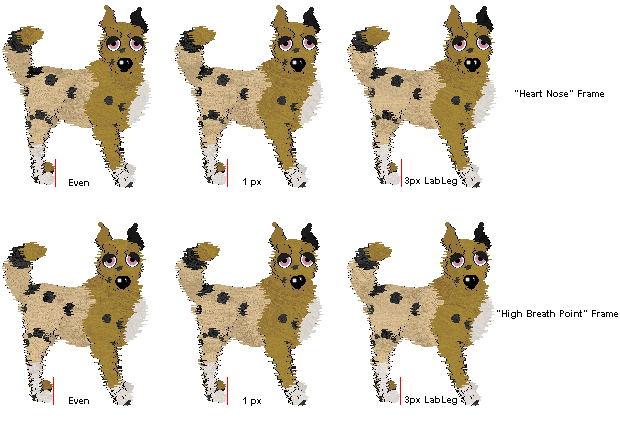
This chart illustrates the aforementioned differences in features based on different alignments. Lab legs are notorious for this in my experience.
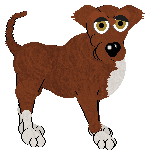
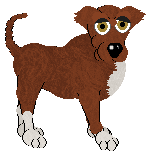
Ascott has lab legs – he is capable of 1 pixel and 3 pixel alignment. This pet is an excellent example of how alignments can change the pet’s nose. I personally think that 3px back is too much for this mix, but folks who prefer a tidier nose may place the pose with the 3 pixel alignment higher.
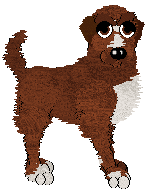

Desert Rose is a golden retriever mix. Since goldens are based on the lab, the legs are essentially the same and you can squeak by with an extra pixel on the alignment. As you can see, she heart noses with the lab style alignment, but flat noses with even toes.
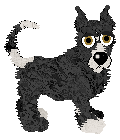
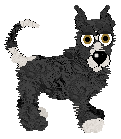
Nibbler has unusual scales and a dachie scp. This means his features are a bit unique. When comparing the same frame at even toes or 1 px back, there are subtle differences. It is up to the handler to decide which pose they feel is the best to enter.
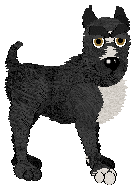
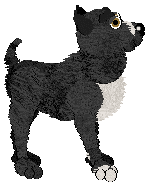
Polaris has lab legs that are posed with even toes in the dali pose image, and 2 pixels back “lab alignment” in the dane pose image. His scales give him a flat nose with even toes, but it makes the scottie feet more attractive. A pet can look misaligned at a glance with when they have large feet in more extreme alignments. Again, it is up to the handler to decide which features they value, and what is most flattering for their pet.
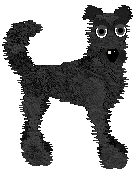
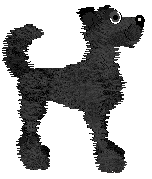
Simon’s dane features at small scales give him a flat nose. Simon has dali legs, and he would only do even toes or 2 px back, which meant there was only one proper alignment for me to use. If you look at the tail curve between the dane and dali poses, you can see that the dali pose is a bit more relaxed by comparison. This was Simon’s most attractive dali frame - it’s the frame which would have yielded a heart nose if he was capable.
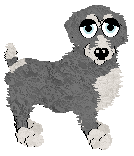
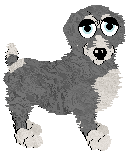
Zephyr illustrates that her highest breath point lacks a heart nose, which is typically the case for most petz. (Dalis aren’t at the highest breath point for that heart nose frame, they are like Zephyr). Heart noses typically place better in shows than a flat nose, though I personally prefer the appearance of the flat nose frame for the way the ears lay, the breath point, and for my personal flat nose preference over the trendy heart. If your pet cannot heart nose, it will be up to you to decide if you want to try entering the frame with the higher breath point instead of the failed heart nose frame. Simon look nice and performed well with his failed heart frame, but it’s never a bad idea to try out both images and see what judges think of them!
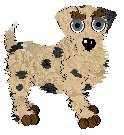
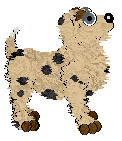
Sandy is delightfully aligned and has an overall tidy pose with lovely eyes, but her scales lead to an inevitably wobbly heart nose. I used her dane pose instead.
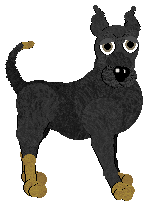

Oxford has a wobby heart at even toes, and less attractive front legs. A 2px back alignment for his lab legs, as seen in his dane pose, is more appealing. I used his dane pose to avoid the debacle of lab leg alignment and flat vs wobbly heart nose choices - it was well liked by judges.
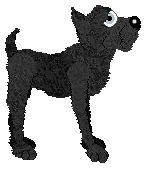
Pistol’s scales combined with the dane body make him appear to be skinny posing. However, the general consensus is that he is not! His breath point is correct (which you can tell by the tail), but he looks a bit more relaxed/elongated than other petz in a dane pose because of the scottie head. It is important to look carefully at quirky mixies when judging because of cases like these!
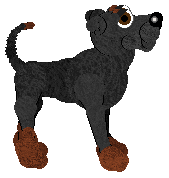
Rugby is another pet that illustrates the “elongated” or deceptively relaxed dane pose due to the scottie head.
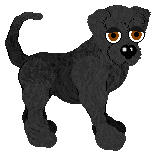
Ram is at the appropriate breath point – he has a heart nose and that chi tail is doing its curvy thing. But his body looks skinny or too relaxed. This is an illusion! The bullie head makes you think he should be shorter and puffier, but he has a chihuahua body, and evidently, as far as I could figure out anyway, that’s just what that a chi bod looks like with a bullie head. Ram illustrates how less common groupings of body partz can create a false sense of a pose being incorrect.
~ If you are ever in doubt as a handler or as a judge, never hesitate to ask for help or a second opinion! ~
I will edit this guide with additional information and samples as needed!
~ECRose
The RKC dogz posing guide is an amazing resource for posing dogz, and I recommend it as the place to start with learning to pose caninez. However, it can still be challenging to know if you’ve secured the best possible pose for your pup if it has a mixture of different breed features. I’ve penned down a few tidbits as an addition to the information provided on RKC. I hope you will find it useful when you’re posing some of the more uniquely shaped individuals in your crew (or if you are judging a pet and want to be sure you are placing it fairly).
ALIGNMENT:
Whatever the mix is – shoot for even back toes or the far paw being one pixel back. These two alignments tend to do well with most judges and are generally considered to be correct. Whatever conglomeration of ballz you are working with – alignment is the place to start.
Mixed breeds can be quirky, but they should be able to achieve even toes, 1 pixel back, or both. If you are struggling to get either of these alignments go for 2 pixels back. For most judges, a pet isn’t considered aligned if the far paw is in front of the close one by any number of pixels.
Lab legs are an exception to note here. They can be acceptably aligned at even toes or up to 3 px back on the far paw. Check Gene Poolz to see if you are working with lab legs. Bear in mind that lab alignment is about the legs – not the face, not the body, feet, etc. So just because you have a lab mix on hand, doesn’t mean you should be shooting for “lab alignment.” If in doubt, keep it simple and shoot for the aforementioned even toes or 1 pixel back. Lab legs are accepted in these alignments as well.
The other features of your pet (such as its scales) will influence its appearance in an aligned pose. If your mixie can pose with even toes as well as 1 pixel back, try to get poses in both alignments to see which is more flattering.
DALI POSE
If you are struggling to isolate the correct dali pose frame for your aligned pet, try the following:
~ Check the nose for the heart shape.
~ Check the breath point. (Is the chest full, are the legs straight, is the tail curled?)
~ Measure how close to even the eyes are (using the RKC guide for the breed head as a general reference).
~ Cross reference the pet’s individual body parts with the purebred examples at RKC.
If you are autosaving the pose sequence, you will ideally have the frames before and after the one you are considering, so you can thumb through and watch the tail curling, the legs straightening, and the rate of head turn as the pose progresses. If you don’t typically autosave the entire sequence, I do recommend electing to use this method for securing a dali pose on unusual mixes. It can be challenging to spot the correct frame without the neighboring frames for reference, especially for mixies with a more limited or angled head rotation, like bullies and scotties.
Dali poses can also be tricky on mixed breeds because the current trend is for your pet to have a “heart nose.” Unfortunately, some mixed breeds cannot achieve a heart nose at all, or if they can it is a bit wobbly. It also tends to look less flattering because it is typically not the frame that is at the pet's highest breath point. You may have to decide if you want to buck the trend and use the pose with the more flattering breath point, or the frame with the trendy heart nose (or the closest thing to a heart nose that your pet can achieve).
It is important to note that sometimes posing the pet at different alignments can provide different nose results. As the pet’s handler, you may have to decide if the pose with the wobbly heart nose is better than a flat nose, or if the heart nose pose is better than the one that is more traditionally aligned. If your pet cannot achieve a heart nose at all in any proper alignment, your best bet is usually to use the frame that is correct in every other general way (essentially the frame that would have a heart nose if the pet was able to do it, even though this is typically the frame before the highest breath point. I often use the highest breath point frame in these scenarios since I prefer it, but I admit that it typically does not place well.)
DANE POSES
Dane poses can be a must for mixies with dali poses that look a bit sloppy, even at their best. When the pet is aligned, you want the highest breath point and the head looking as straight forward as possible. High heads are often favored, but low heads can be regal as well. How high your pet’s head can tilt seems to be dictated by the breed head.
Sometimes a dane pose doesn’t look quite as tall and compact with certain body part combinations – especially scottie heads on non scottie bodies. Analyzing the curve of the pet’s tail can help in these situations, especially if you are on the judging end of the equation.
GENERAL INFO
~ Sometimes a pet can appear to be skinny posing if the combination of scales and body parts creates a deception. Dane bodies are notorious for this. If you suspect your pet gave you a skinny pose, save it, and get another pose sequence or two to compare. I put the pet away after the questionable pose set, then take it back out again, just to be extra sure that I’m starting with a fresh slate.
~ Scales can interfere with nose shapes, eyes, alignment ability – you name it. Whatever limitations your pet has, go for the best alignment it can get first. That is your top priority. After that, look at the breath point. From there, you may have to choose what you believe is the most flattering representation of your pet. In my opinion, this is what makes showing mixes a fun experience. You have choices to make, not a cookie cutter pixel arrangement to recreate from a sample.
~ Although the mixing of breed features can influence how they appear in pose, comparing each body part to the purebred sample can be very helpful. For example, a sheepie tail at the proper frame on a mixie is likely to look very similar to a sheepie tail on a purebred sheepdog. The key to using the piece by piece analysis is knowing your pet’s body parts. As the pet’s handler, you should familiarize yourself with the composition of your pet so that you have a better idea of what to expect from their poses. If you can’t ID dog parts at a glance, or if scales are making things a little unusual, Gene Poolz can usually clear up the question. If that doesn’t do it, share the pet’s photos with your helpful petz community friends to reach a consensus.
~ If you are judging a quirky mix, bear in mind that it may not be able to display a heart nose, or that its alignment may be impacted by its scales. Refer to the tips above to determine as well as possible if the pet in question is at its best. Sometimes, especially in dali pose, the pet’s head may look like it is at the incorrect frame, or as if it is not at the proper breath point even when it is correct. If the pet is aligned, it is your responsibility as a judge to give the pet a fair analysis.
SAMPLE GALLERY:

This chart illustrates the aforementioned differences in features based on different alignments. Lab legs are notorious for this in my experience.


Ascott has lab legs – he is capable of 1 pixel and 3 pixel alignment. This pet is an excellent example of how alignments can change the pet’s nose. I personally think that 3px back is too much for this mix, but folks who prefer a tidier nose may place the pose with the 3 pixel alignment higher.


Desert Rose is a golden retriever mix. Since goldens are based on the lab, the legs are essentially the same and you can squeak by with an extra pixel on the alignment. As you can see, she heart noses with the lab style alignment, but flat noses with even toes.


Nibbler has unusual scales and a dachie scp. This means his features are a bit unique. When comparing the same frame at even toes or 1 px back, there are subtle differences. It is up to the handler to decide which pose they feel is the best to enter.


Polaris has lab legs that are posed with even toes in the dali pose image, and 2 pixels back “lab alignment” in the dane pose image. His scales give him a flat nose with even toes, but it makes the scottie feet more attractive. A pet can look misaligned at a glance with when they have large feet in more extreme alignments. Again, it is up to the handler to decide which features they value, and what is most flattering for their pet.


Simon’s dane features at small scales give him a flat nose. Simon has dali legs, and he would only do even toes or 2 px back, which meant there was only one proper alignment for me to use. If you look at the tail curve between the dane and dali poses, you can see that the dali pose is a bit more relaxed by comparison. This was Simon’s most attractive dali frame - it’s the frame which would have yielded a heart nose if he was capable.


Zephyr illustrates that her highest breath point lacks a heart nose, which is typically the case for most petz. (Dalis aren’t at the highest breath point for that heart nose frame, they are like Zephyr). Heart noses typically place better in shows than a flat nose, though I personally prefer the appearance of the flat nose frame for the way the ears lay, the breath point, and for my personal flat nose preference over the trendy heart. If your pet cannot heart nose, it will be up to you to decide if you want to try entering the frame with the higher breath point instead of the failed heart nose frame. Simon look nice and performed well with his failed heart frame, but it’s never a bad idea to try out both images and see what judges think of them!


Sandy is delightfully aligned and has an overall tidy pose with lovely eyes, but her scales lead to an inevitably wobbly heart nose. I used her dane pose instead.


Oxford has a wobby heart at even toes, and less attractive front legs. A 2px back alignment for his lab legs, as seen in his dane pose, is more appealing. I used his dane pose to avoid the debacle of lab leg alignment and flat vs wobbly heart nose choices - it was well liked by judges.

Pistol’s scales combined with the dane body make him appear to be skinny posing. However, the general consensus is that he is not! His breath point is correct (which you can tell by the tail), but he looks a bit more relaxed/elongated than other petz in a dane pose because of the scottie head. It is important to look carefully at quirky mixies when judging because of cases like these!

Rugby is another pet that illustrates the “elongated” or deceptively relaxed dane pose due to the scottie head.

Ram is at the appropriate breath point – he has a heart nose and that chi tail is doing its curvy thing. But his body looks skinny or too relaxed. This is an illusion! The bullie head makes you think he should be shorter and puffier, but he has a chihuahua body, and evidently, as far as I could figure out anyway, that’s just what that a chi bod looks like with a bullie head. Ram illustrates how less common groupings of body partz can create a false sense of a pose being incorrect.
~ If you are ever in doubt as a handler or as a judge, never hesitate to ask for help or a second opinion! ~
I will edit this guide with additional information and samples as needed!
~ECRose